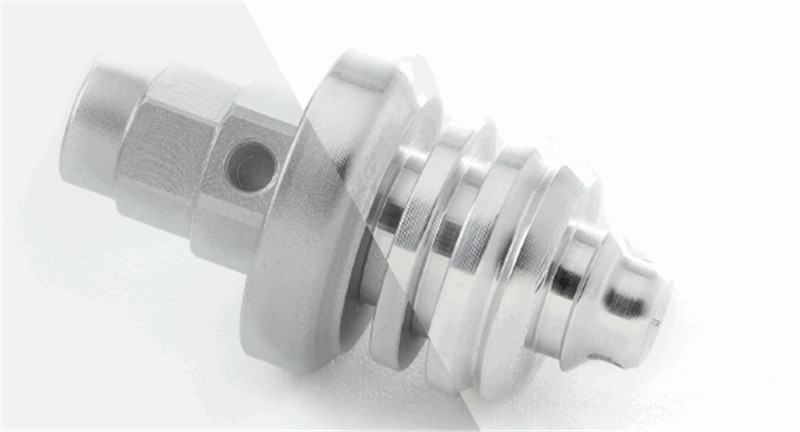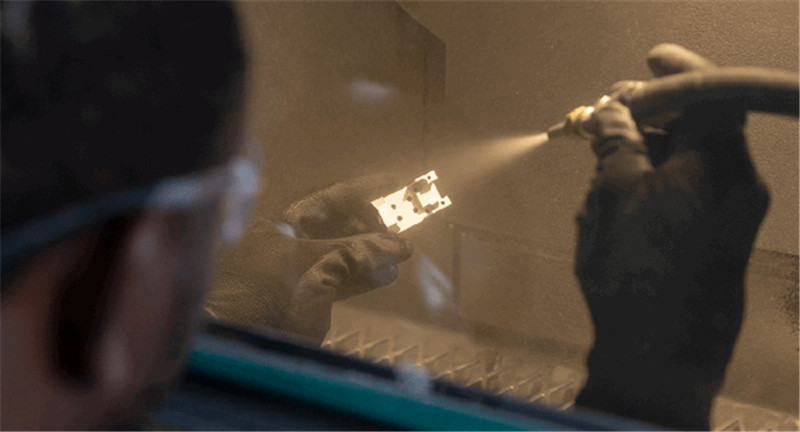The stability, reliability and practicability of the machined parts can be reflected in the surface accuracy and quality of the machined parts. There are many ways to extend parts, but the most important one is to improve the machining accuracy and quality of the part surface during the machining of mechanical parts.

The influence and effect of the surface treatment of the parts on the parts
First, it can affect the fatigue strength of the parts; secondly, it can affect the corrosion resistance of the parts; thirdly, it can have a certain impact on the wear resistance of the parts, and finally it has an impact on the rigid contact strength of the parts. Therefore, we must strictly control and control the processing quality of the parts during the processing of the parts. Polishing and grinding are the most commonly used methods for surface finishing of parts.
There are some main functions of surface finishing on machined parts.
1) It can effectively reduce the surface roughness during the processing of parts;
2) It can effectively guarantee the elimination or reduction of surface defects in the processing of parts;
3) It can effectively improve the performance and precision quality of the surface of the parts;
4) It can greatly improve the physical properties of parts after processing;
5) Able to balance the processing stress generated during the processing of parts;
6) It can effectively improve the finish and cleanliness of the processed surface of the part. In addition, it can also be of great help to the assembly work after the parts are processed, and the overall assembly process of the parts is improved.
The main methods of surface finishing for machining parts
Secondary finishing processes mainly include the following methods: precision grinding; grinding; polishing and electrochemical polishing. The following are simple analysis and description of each processing method.

2.1 Precision grinding
Grinding is the most widely used in the processing of parts. At present, almost all parts and materials can be processed by grinding processing methods, which can guarantee the processing accuracy and processing quality of the parts to the greatest extent. However, it should be noted that although precision grinding has many advantages, its low processing efficiency still hinders the further development of static grinding processing technology. Because precision grinding processing requires processing of fine particles, very high processing temperatures will be generated during the processing, which will cause some undesirable conditions in the processed parts under the action of high temperatures, the most significant being the internal metal The metallographic structure is prone to change at high temperatures, which can lead to hardening of machining. Due to the high temperature in the machining process, it can also affect the later heat treatment and quenching of the parts. The most obvious manifestation is that a certain amount of surface will appear on the surface of the parts after precision grinding. The surface is burned or cracked. Therefore, in the processing of parts, it is necessary to carefully select the silent grinding processing technology and make corresponding preparations in advance.
2.2 Grinding
In the finishing process, the grinding process technology is mainly to process the processed materials through the corresponding processing and grinding tools. This kind of processing is a kind of micro-processing, which can effectively guarantee the processing accuracy and processing quality of the processed surface of the part. The main disadvantage of the grinding process is that the processing speed is too low during the grinding process, and the processing time used is longer, which has a certain impact on the processing efficiency.
2.3 Polishing
Polishing is the use of fine abrasive grains and soft tools to process the surface of the workpiece. It is a simple, rapid and inexpensive surface finishing method. Its main purpose is to remove the processing traces of the previous process and improve the surface roughness of the workpiece. Make the workpiece get a smooth and shiny surface. The difference between traditional grinding and polishing is in the tools and effects. The grinding tool used for grinding is hard, which can not only reduce the surface roughness, but also improve the accuracy, while the tool used for polishing is soft, which mainly reduces The surface roughness of the workpiece does not improve the machining accuracy, and sometimes even reduces or destroys the geometric accuracy.
2.4 The electrochemical polishing
Electrochemical polishing processing is a kind of finishing processing on the surface of the workpiece using electrochemical methods. It directly uses the oxidation-reduction reaction that occurs on the metal surface to remove the microscopic high points left by the metal surface cutting processing to reduce its surface roughness a way.
Find more surface treatment methods